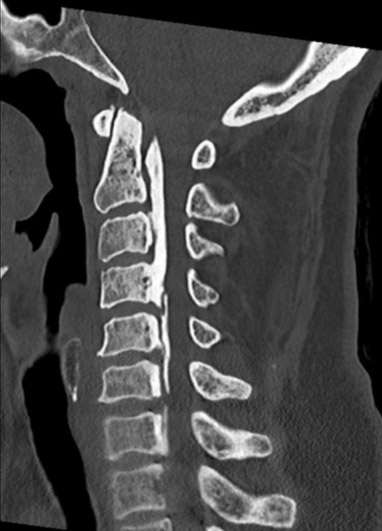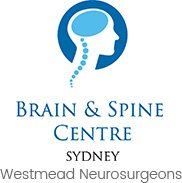Ossification of the Posterior Longitudinal Ligament (OPLL)
Ossification of the Posterior Longitudinal Ligament (OPLL) is a condition where the ligament (band of fibres) that runs along the back of the bone (vertebral body) and disc literally hardens into bone. OPLL usually affects the cervical spine (i.e. neck). The cause of OPLL is unclear, but it does appear to be more common among people of Asian descent. In OPLL, the space (spinal canal) for the nerves and spinal cord may become narrowed, leading to nerve or spinal cord compression.
Symptoms
- Neck pain
- Arm pain, numbness, pins and needles, or weakness
- Clumsy hands, or problems with dexterity and fine motor movements, due to spinal cord compression
- Balance problems, or difficulties with walking, due to spinal cord compression
- Bladder and bowel issues, due to spinal cord compression
Diagnosis
- X-rays
- CT
- MRI

Figure. CT showing OPLL spanning almost the entire cervical spine.
Treatment
Medications, such as anti-inflammatories, and cortisone injections may temporarily alleviate pain. However, OPLL may progress over time and once there is pressure on the spinal cord, surgery is usually necessary to prevent further, potentially irreversible damage. Depending on the individual case, surgery can be performed through the front or back of the neck, or both. Surgery through the front (i.e. anterior approach) directly deals with the OPLL, but is associated with a higher risk of spinal fluid (CSF) leak because the OPLL is often stuck to the dura (i.e. the covering of the spinal cord and nerves). For this reason, surgery through the back (i.e. posterior approach) is usually preferred, allowing the spinal cord to ‘drift back’. However, the posterior approach may not work in all cases, especially if the OPLL is very thick or if the neck is bent forwards (kyphosis).
Anterior approaches include
- Anterior cervical corpectomy and fusion, i.e. removing the vertebral body and the OPLL attached to it.
Posterior approaches include
- Cervical laminectomy and fusion (with screws and rods), i.e. removing the ‘roof’ (lamina) of the spinal canal. Furthermore, growth of OPLL may be ‘halted’ if the spine is fused and no longer moves
- Cervical laminoplasty, i.e. ‘opening up’ the spinal canal (usually held open with small metal plates), done without fusing the spine




